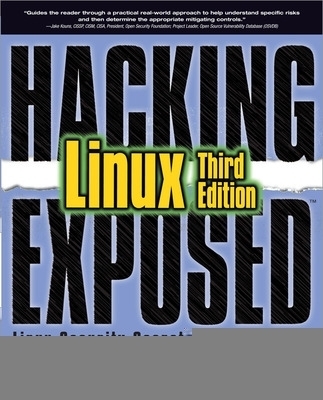
Hacking Exposed Linux
Osborne/McGraw-Hill (Verlag)
978-0-07-226257-5 (ISBN)
Publisher's Note: Products purchased from Third Party sellers are not guaranteed by the publisher for quality, authenticity, or access to any online entitlements included with the product.
The Latest Linux Security Solutions
This authoritative guide will help you secure your Linux network--whether you use Linux as a desktop OS, for Internet services, for telecommunications, or for wireless services. Completely rewritten the ISECOM way, Hacking Exposed Linux, Third Edition provides the most up-to-date coverage available from a large team of topic-focused experts. The book is based on the latest ISECOM security research and shows you, in full detail, how to lock out intruders and defend your Linux systems against catastrophic attacks.
Secure Linux by using attacks and countermeasures from the latest OSSTMM research
Follow attack techniques of PSTN, ISDN, and PSDN over Linux
Harden VoIP, Bluetooth, RF, RFID, and IR devices on Linux
Block Linux signal jamming, cloning, and eavesdropping attacks
Apply Trusted Computing and cryptography tools for your best defense
Fix vulnerabilities in DNS, SMTP, and Web 2.0 services
Prevent SPAM, Trojan, phishing, DoS, and DDoS exploits
Find and repair errors in C code with static analysis and Hoare Logic
ISECOM (the Institute for Security and Open Methodologies), (Barcelona, Spain & New York, NY) is an open, collaborative, security research community established in January 2001. In order to fulfill its mission focus to apply critical thinking and scientific methodology to all facets of security, ISECOM is chartered as a commercial-free and non-partisan organization. The ISECOM Board of Directors reflects many countries representing thousands of members and volunteers from around the world. In a world of increasing commercial and industrial misrepresentation of security, ISECOM enables logical and rational decision-making in all aspects of security, integrity, privacy, and safety.
Foreword
Acknowledgments
Introduction
Part I: Security and Controls
Chapter 1. Applying Security
Chapter 2. Applying Interactive Controls
Chapter 3. Applying Process Controls
Part II: Hacking the System
Chapter 4. Local Access Control
Chapter 5. Data Networks Security
Chapter 6. Unconventional Data Attack Vectors
Chapter 7. Voice over IP
Chapter 8. Wireless Networks
Chapter 9. Input/Output Devices
Chapter 10. RFID--Radio Frequency Identification
Chapter 11. Emanation Attacks
Chapter 12. Trusted Computing
Part III: Hacking the Users
Chapter 13. Web Application Hacking
Chapter 14. Mail Services
Chapter 15. Name Services
Part IV: Care and Maintenance
Chapter 16. Reliability: Static Analysis of C Code
Chapter 17. Security Tweaks in the Linux Kernal
Part V: Appendixes
Appendix A. Management and Maintenance
Appendix B. Linux Forensics and Data Recovery
Appendix C. BSD
Index
| Erscheint lt. Verlag | 16.8.2008 |
|---|---|
| Zusatzinfo | 20 Illustrations |
| Verlagsort | New York |
| Sprache | englisch |
| Maße | 185 x 226 mm |
| Gewicht | 1042 g |
| Themenwelt | Informatik ► Betriebssysteme / Server ► Unix / Linux |
| ISBN-10 | 0-07-226257-5 / 0072262575 |
| ISBN-13 | 978-0-07-226257-5 / 9780072262575 |
| Zustand | Neuware |
| Haben Sie eine Frage zum Produkt? |
aus dem Bereich



